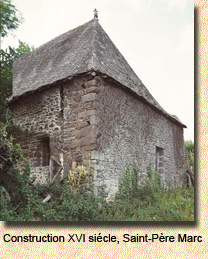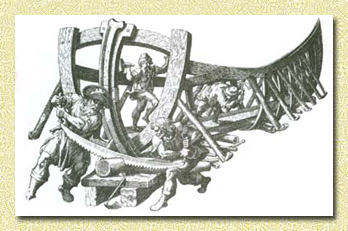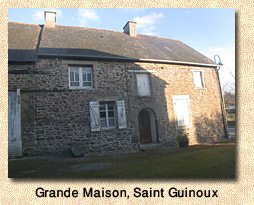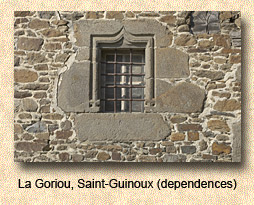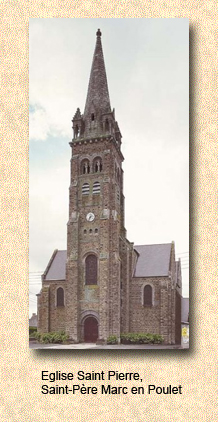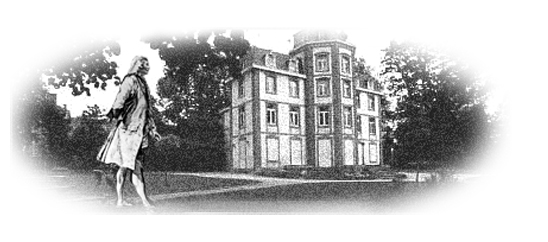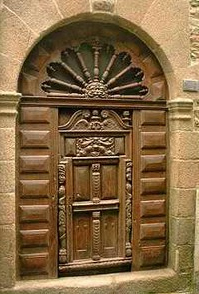|
Their 6
children were:
Michel
(1621), Pierre (1624), Mathurin (1625), Gabrielle (1626), Jeanne (1632),
and
JULIEN BRIAND,
Sieur de la
Chesnais,
born in St. Père on 6-30-1629. His
godfather at his baptism was his maternal grandfather, Jullien Charton,
Sieur de la Chesnais, from whom he heritages the land lordship, and his
godmother Françoise Lemarchand, Dame du Boisbonnier.
Julien, besides of being a renowned citizen, a nobleman, was the Treasurer of the Community. He was married three times, and he had 9 children throughout 18
years of his prolific life; the younger, Jeanne, in 1682, when he was 53 years old.
His first marriage was on 11-5-1658
with Jeanne Billecocq, in St. Père; his
second marriage was with Jacquette Locquet,
on 17-7-1663, and the 3rd marriage was with Gilonne
Breal, on 1-7-1676.
Children of his first marriage with Jeanne Billecocq:
LAURENT
BRIAND, Sieur de la Villeroux,
on 10-28-1659
and Pierre, in 1661.
At Laurent Briand's baptism his
godfather was his paternal grandfather, Laurent Briand, Sieur de
l'Hostellerie, and his godmother Guillemette Trublet, Dame de Nermont.
Jeanne Billecocq was the daughter of François Billecocq, Sieur de la Begaudière,
Lawyer in the Court of Saint-Père. Being widow of Perrine Boulain, he
becomes a priest, and is himself, who in the Parish of Saint Coulomb gives
the nuptial blessing at the wedding ceremony of his daughter when she is
married with Julien Briand in 1658.
Jeanne Billecocq died in 1663, being
only 23 years old.
Children of his second marriage with Jacquette Locquet: Josselin (1664), Pierre (1666) and Jacquette (1668).
Children of his third marriage with Gilonne Breal:
François Julien (1677) Pierre-Henry
(1678) Laurence Rose (1680) and Jeanne (1682).
Julien Briand, Sieur de la Chesnais,
was deceased in Saint-Père after 1690. |

